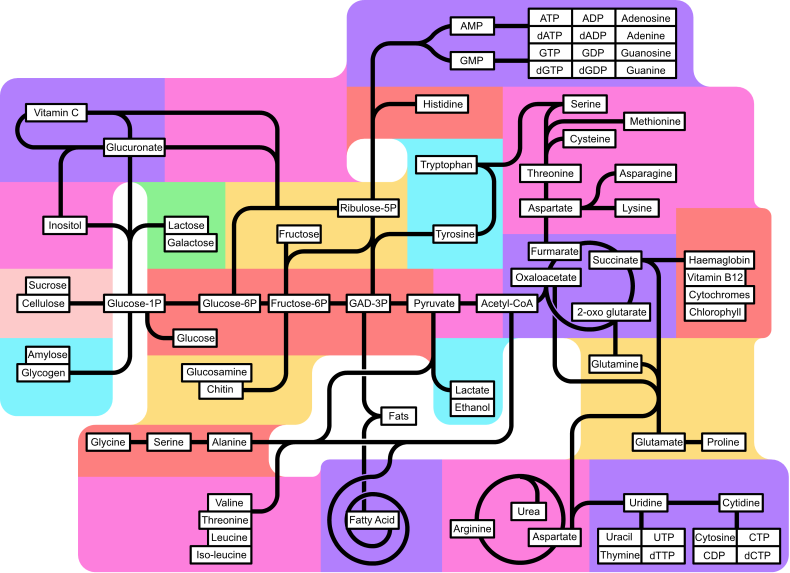Lintasan metabolisme
Artikel ini perlu diterjemahkan dari bahasa Inggris ke bahasa Indonesia. Artikel ini ditulis atau diterjemahkan secara buruk dari Wikipedia bahasa Inggris. Jika halaman ini ditujukan untuk komunitas bahasa Inggris, halaman itu harus dikontribusikan ke Wikipedia bahasa Inggris. Lihat daftar bahasa Wikipedia. Artikel yang tidak diterjemahkan dapat dihapus secara cepat sesuai kriteria A2. Jika Anda ingin memeriksa artikel ini, Anda boleh menggunakan mesin penerjemah. Namun ingat, mohon tidak menyalin hasil terjemahan tersebut ke artikel, karena umumnya merupakan terjemahan berkualitas rendah. |
Dalam biokimia, lintasan metabolisme (bahasa Inggris: metabolic pathway) adalah reaksi kimiawi yang terjadi di dalam sel. In each pathway, a principal chemical is modified by chemical reactions. Enzymes catalyze these reactions, and often require dietary minerals, vitamins, and other cofactors in order to function properly. Because of the many chemicals that may be involved, pathways can be quite elaborate. In addition, many pathways can exist within a cell. This collection of pathways is called the metabolic network. Pathways are important to the maintenance of homeostasis within an organism.
Metabolism is a step-by-step modification of the initial molecule to shape it into another product. The result can be used in one of three ways:
- To be stored by the cell
- To be used immediately, as a metabolic product
- To initiate another metabolic pathway, called a flux generating step.
A molecule called a substrate enters a metabolic pathway depending on the needs of the cell and the availability of the substrate. An increase in concentration of anabolic and catabolic end-products would slow the metabolic rate for that particular pathway.
Overview
Each metabolic pathway is composed of a series of biochemical reactions that are connected by their intermediates: The reactants (or substrates) of one reaction are the products of the previous one, and so on. Metabolic pathways are usually considered in one direction (although all reactions are chemically reversible, conditions in the cell are such that it is thermodynamically more favorable for flux to be in one of the directions).
- Glycolysis was the first metabolic pathway discovered:
- As glucose enters a cell, it is immediately phosphorylated by ATP to glucose 6-phosphate in the irreversible first step. This is to prevent the glucose from leaving the cell.
- In times of excess lipid or protein energy sources, glycolysis may run in reverse (gluconeogenesis) in order to produce glucose 6-phosphate for storage as glycogen or starch.
- Metabolic pathways are often regulated by feedback inhibition, or by a cycle wherein one of the products in the cycle starts the reaction again, such as the Krebs Cycle (see below).
- Anabolic and catabolic pathways in eukaryotes are separated either by compartmentation or by the use of different enzymes and co-factors.
Lintasan metabolisme utama
| All pathway labels on this image are links, simply click to access the article. | ||
| A high resolution labeled version of this image is available here. | ||

